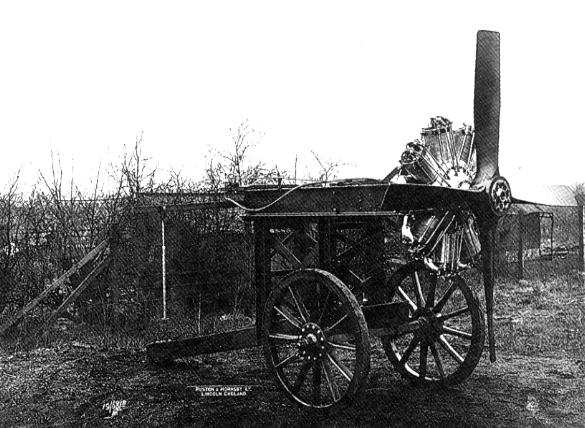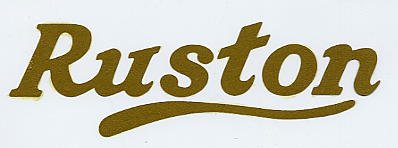The 1914-18 War brought many new products into Ruston's workshops. They produced all manner of war machines, guns, parts and ammunition, for use by land, sea and air forces. For eample, they were the third largest producer of fighter aircraft - building more than 2750 aeroplanes and more than 4000 aero engines during the war (see pictures below) The first German Zeppelin to be shot down on British soil was done so by a Ruston-built BE2 fighter. The pilot, Lt Leefe Robinson was awarded the Victoria Cross for this deed.

Northern Light Power & Coal Co., Canada and used for hauling coal (in 8 wagons, each
carrying 12.5 tons of coal) from Dawson City to the Klondyke gold fields.

than 2750 aircraft were produced, including more than 1000 Sopwith Camels.

were the largest producers of aero engines in WWI, producing more than 4000 in all!

granted for Rustons to paint this plane in a decorative design and to use it for publicity purposes!

in WWI (1917) 28 were produced and supplied to Gunpowder factories
Ruston & Hornsby Ltd.
Rustons acquired the Grantham business and the new firm of Ruston &
Hornsby Ltd was born on 11th September 1918. In the initial period of peace, the
new company offered Ruston high compression oil engines (see picture below)
alongside Hornsby safety paraffin engines. A big range of gas engines was
available, and Rustons had designed a gas producer that would burn any
combustible material. Steam boilers were available for a variety of purposes,
and excavator models from 16 to 120 tons were being produced. Other standard
products included: traction engines, road rollers, pumps, wagons, threshers,
baling presses, binders, mowers, ploughs, drills grinding mills etc.

Ruston-Hornsby Class 'HR' 2-cylinder
horizontal, open-crank oil engine - thousands were produced from 1930 to
1965
The war had speeded up the pace of life, and the attractions of
motor car production were found tempting by Rustons. The experience gained in
building wooden-framed aircraft was put to good use, and the first
Ruston-Hornsby car was available in 1920 Unfortunately, too many other
engineering firms had the same idea. The established car producers were
adopting mass-production methods, and the cheap(£100) family car was being
turned out in very large numbers. The well-built but expensive Ruston car could
not competer effectively, and production ended in 1925, after approximately 1300
cars had been made.

1920 Ruston-Hornsby 16hp A-1 Tourer,
photographed in 1996 - approximately
1300 Ruston-Hornsby cars were produced
from 1920 to 1925
Rustons had a similar experience with farm tractors. Before the
war they had designed a good tractor that was beginning to sell well in the
South American markets. During the War years, the USA captured these markets. In
1920 Rustons designed a British version of the Wallace tractor. Again, they
could not compete successfully with the established tractor builders.
Approximately 300 were sold.
Continued on next page. © European Gas Turbines Ltd 1997
• Main •
History menu
•


1300 Ruston-Hornsby cars were produced from 1920 to 1925

